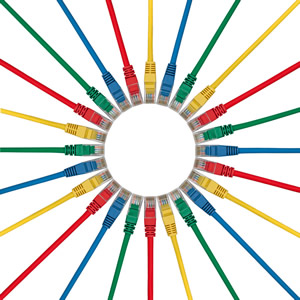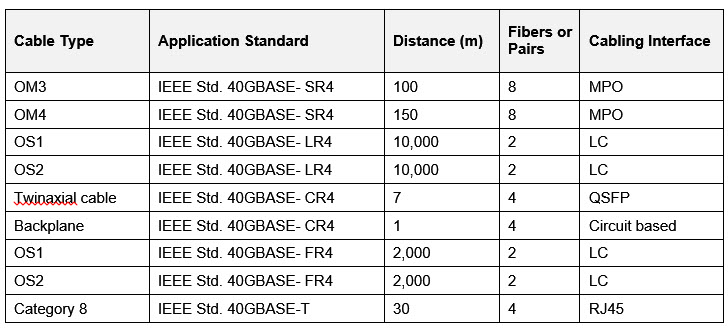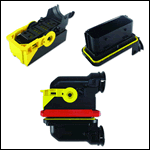How to Specify 40G Cabling
40-gigabit applications over various media types are intended to reduce bottlenecks by providing improved speed within and between data centers.
 The exponential growth of Internet and mobile device data traffic has had a huge impact on data center servers, high-performance computing clusters, and network storage equipment that serve and manage this traffic. 40-gigabit applications over various media types are intended to reduce bottlenecks by offering improved speed within and between data centers. The 40G data rate was selected for data center equipment and connectivity because of its optimum balance of cost and performance. This continues to play a significant role in providing the increased network capacity needed in data centers.
The exponential growth of Internet and mobile device data traffic has had a huge impact on data center servers, high-performance computing clusters, and network storage equipment that serve and manage this traffic. 40-gigabit applications over various media types are intended to reduce bottlenecks by offering improved speed within and between data centers. The 40G data rate was selected for data center equipment and connectivity because of its optimum balance of cost and performance. This continues to play a significant role in providing the increased network capacity needed in data centers.
40G Cabling Options
The following table shows the different media types, distances, and deployment areas that use 40G applications.

The OS1 and OS2 singlemode optical fiber cabling categories are different because OS2 is specified at 1,310-; 1,383-; and 1,550-nanometer wavelengths, while OS1 is specified at 1,310 and 1,550 nanometers. For multimode fiber cabling, OM4 offers a 50% increase in reach compared to OM3 and is the recommended media type for data centers.
The Category 8 balanced twisted-pair cabling is the latest entry into the 40G application domain and offers the advantages of lower cost and auto-negotiation of data rates from 1G to 10G to 40G. This makes equipment upgrades much more flexible and incremental, rather than requiring a forklift upgrade.
If you look closely, you will see that the various 40G options all have the IEEE 802.3 common requirements, making them easy to integrate into existing or future IEEE 802.3-based networks.
Specifying 40G
For today’s 40G applications, there are a variety of media types that allow customers high-speed connectivity within and between data centers. The choice of media type depends on the topology, the distance, ease of upgrade, and total cost of ownership. Diversity in media types and routing is recommended to reduce chances of major outages caused by a particular media type or a particular pathway in the data center. For example, servers should have uplinks with fiber ports and balanced twisted-pair ports connected to different access switches. Backward compatibility to existing cabling and equipment interfaces is another major consideration that must be factored into the design of data center infrastructure. Also, maintaining the RJ45 modular connector interface allows both new and old equipment to be plugged into new and existing cabling without any adapters. It also makes sense to keep track of everything with the use of an automated infrastructure management system (AIM) as specified in ISO/IEC 18598 or utilizing data center infrastructure management software to improve the operational efficiency of the data center.
We all know that Internet data and traffic will continue to increase, creating a need that will eventually surpass 40G. By asking the right questions and implementing a proper game plan for the future, today’s 40G media types will make future transitions easier and timely.
Author Masood Shariff is an engineer senior principal in the systems engineering group of CommScope.






